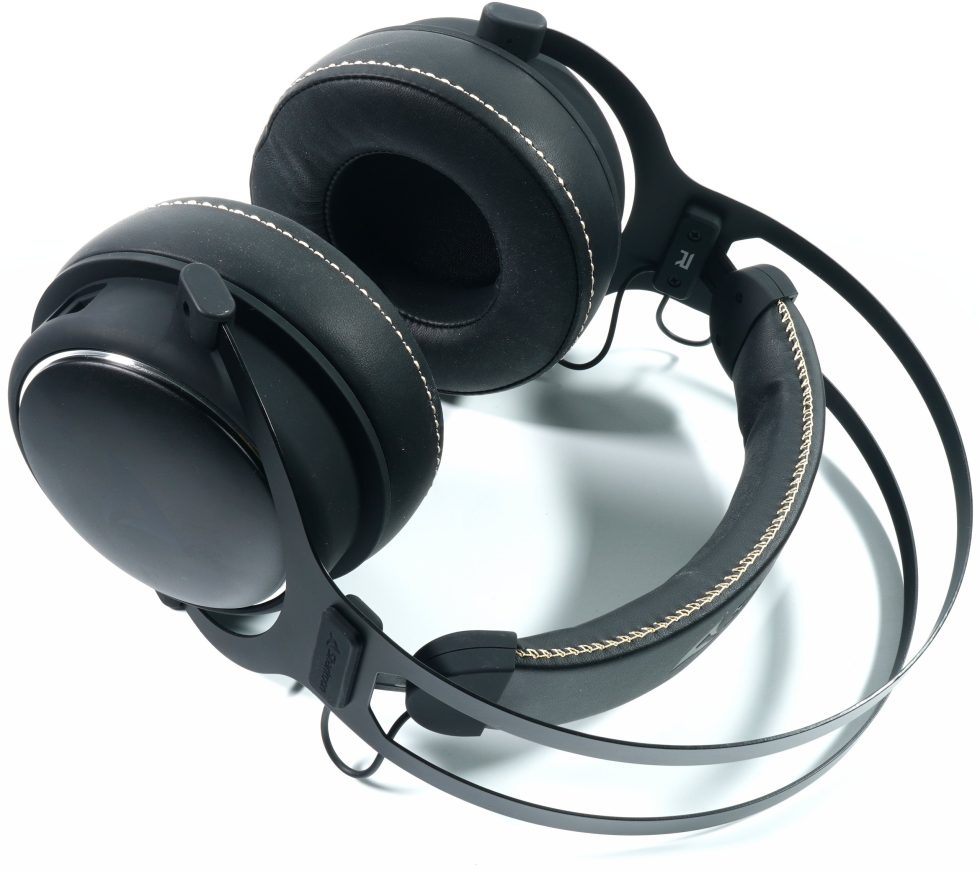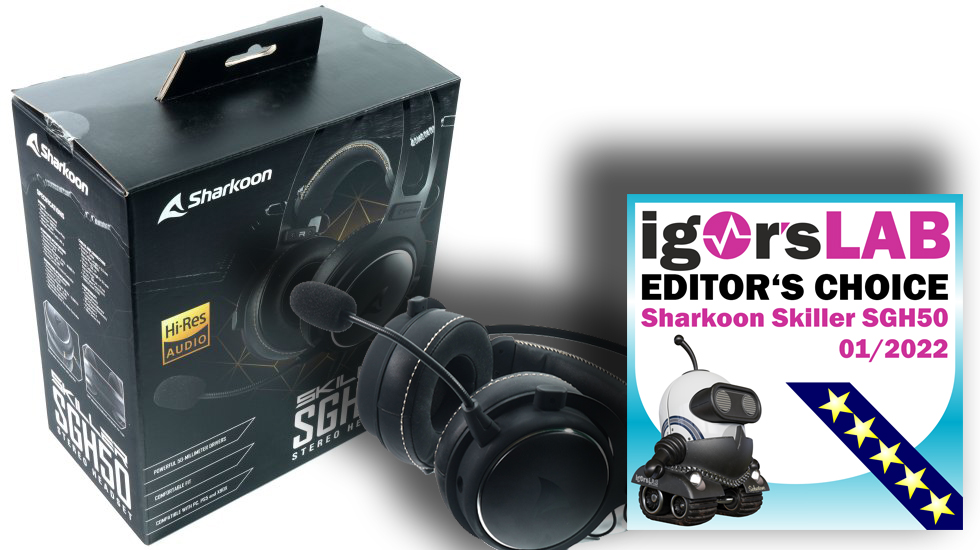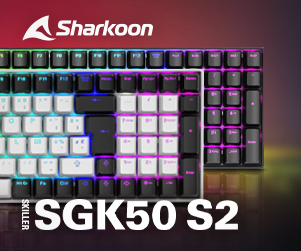Headphones sound impression: the listening experience
Let’s now also subjectively test what you get in the original. Despite several months of use, I locked the headset in the measurement room for another 2 days and tortured it with a selected sound loop and an average of almost 30 mW per channel, just to scrub additional operating hours. What do you do for our die-hard single-play fanatics among the readers, even if it will probably remain a mystery for many forever. But there are people who swear by it and I like to counter this criticism by simply doing something like this. And beforehand, I have to warn everyone, because the level stability is downright striking. Brutal could also have been written. The old loud becomes the new ouch!
The SGH50 is already louder than most other headsets in terms of onboard sound, which is also due to the very high sensitivity. On a normal sound card, you already get into the zone of a certain pain spread and at about 100 mW per channel on my Beyerdynamic A20, I pulled it down in fright. Neither my Tesla headphones (Beyerdynamic T1 Gen. 3, Amiron Home) nor the Planar electrostat (Avantone Pro Planar Red) from my own rarities corner can manage these levels. Yes, it is by far the most level-fast headphones that I have here and also by far the cheapest. A borrowed Stax SRS3100 at the special amplifier come there also still somehow in these areas, but one compares then simply times the price! Generally, the amplifier will distort first anyway before the headphones give in. And the user gets a hearing loss anyway if he overdoes it. OMG…
Bass reproduction
Test the lowest bass in the subcontraoctave (16.4 Hz to 32.7 Hz) with a recording of Bach’s Toccata and Fugue in D minor (19 and 25 Hz) and Tchaikovsky’s Festival Overture 1812 (10 Hz and 12.5 Hz). The same applies to the lower ranges of the contraoctave (32.7 to 65.4 Hz). The large bass drum (kick drum), which is a popular accompaniment in underground music and is usually tuned to around 55 to 60 Hz, will then round out this assessment.
The original bass is precise and almost crisp, but a bit too boomy wide in its original state. This is possible with a bit of damming material in the ear cup, even in mega-raven black, because the drivers are brutally level-resistant and the amplifier used (A20) is really not a lightweight. So you can either use the SGH50 as a bass bomber or let it mutate into a black raven, if you put it to it and put something in it. The way the bass performs in the original is really perfectly fine for under 150 Euros. However, as an organ lover you will only get the subcontraoctave satisfactorily on the ear if you add at least 3-6 dB at 32 Hz in the EQ. But then it goes down with a vengeance to the very deepest cellar. Reserves are there without end.
The upper bass up to 150 Hz, which also contains the Great Octave (65.4 to 130.8 Hz), accommodates the fundamental speech frequency of the male voice and is very decisive for the lifelike reproduction of male vocals.
Male vocals almost seem a bit too full-bodied, but without overpacing. For gaming, the original sound is perfectly fine, as every bomb hit comes cleanly to the ear and does not overwhelm the rest of the soundscape. Of course, you don’t need an equalizer here, but if you want to go more audiophile, take away some upper bass. The emphasis is on something.
Midrange
The lower mids (also the fundamental range) are around 150 to 400 Hz. Together with the already mentioned upper bass, this range plays a very important role for the subjectively perceived warmth or fullness of the sound image. The basic speech frequency of female voices can be found in this range.
Female vocals sag slightly on top, but do not go down. On the other hand, the precision with which you are guided from the upper bass to the lower mids is good. This remains quite constant and, apart from the slight dents (see previous page), is quite pleasing. However, the fullness is sufficient and those who like it tuned a bit warmer, add at the EQ at about 500 Hz, depending on your gusto, because this also extends down to about 350 Hz. Here you can choose between cooler playback and cozy fireplace feel-good ambience. The gamer of the world will of course crack the frost whip and leave everything as it is.
The upper mids between 400 Hz to about two KHz include a mark at one KHz that is still considered the reference for many measurements. Unfortunately, this is often noticed in cheaper devices as the manufacturers often try to overemphasize this frequency. This area does not play an insignificant role in gaming either, and a balanced reproduction does not insignificantly contribute to a good spatial resolution.
All this becomes a bit more restrained at about 500 Hz, but with increasing frequency it becomes more concise, clearer and remains quite precise and differentiated despite the partial dominance. Depth staging is actually good, and it doesn’t have to be a virtual 7.1 surround mix to get a good sense of location. The individual sources can still be localized sufficiently well, especially at high levels, regardless of whether there is a boom from below or not. The headset never sounds rough, cocky or careless, but often enough inspires you to listen a bit more closely while gaming, because you are also offered the subtle nuances. It’s not really a hi-fi headphone, but it’s not an ironing board either.
Tweeter range
Between two and about 3.5 KHz, the human ear is most sensitive, especially since this range of lower treble is responsible for the good overtone reproduction of the human voice. This frequency range is crucial for the recognition of a voice or an instrument; in this context, one also speaks of the respective timbre.
The voices have a high recognition value, the instruments too. What is called timbre is quite close to the original, and beyond that almost too aggressive in the foreground. This is no disadvantage for the target group when playing, only those who prefer music should gladly think about a slight correction here.
The mid-range treble (3.5 to six KHz) is decisive for the success or failure of speech reproduction as a whole, because the S and sibilants fall into this range. The upper treble then reaches up to about ten KHz to transition into the super treble.
The sibilants are there, almost overflowing. This is a hair’s breadth away from metallic, especially in the ranges above that, i.e. from around 8 KHz and above. Lucky once again. The super high frequencies are also still strong, and up to about 15 kHz, nothing is left to be desired. I only listen up to about 14.5 kHz, so that’s all I need. Bats then have to be a bit braver from 20 kHz at the latest. Humans probably less so. And I will politely not comment on the Hi-Res Audio label. Nobody needs that anyway, and it’s marketing you can’t hear.
Summary and conclusion
While testing gaming headsets under 60 Euros in the past has often been enough on the path of the horn walk, this headset no longer needs to carry a helping hand over the road of acoustic tears. The headset performs astonishingly well for considerably less than 60 Euros, and Sharkoon has really made a great, if currently (still) hardly noticed, impression. It is certainly the loudest and most level-resistant headset up to 100 Euros (and more), which is also free of put-on attitudes and pointless gaming sounding. So it’s first and foremost honest and first and foremost loud, but without distorting. If it scratches and rattles, then you are guaranteed to listen to the amplifier suffer or die. The headset is only in the warm-up phase for now.
The material mix is really clever in view of the targeted price point, because you only notice the plastic at second glance or through ambitious hand placement. The device is level stable, the sound fits the target group and there are more than enough reserves. Therefore, the award and a purchase tip for those who are not looking for too bass-heavy greasers, but precise handlers for monumental sound construction. The SGH50 can also do that for a price that is more affordable than almost any other headset. A price-performance hit? Yes, definitely. But that alone would be a bit of an understatement.
The only weak point is the rickety wired remote with the silly mute button. Yes, it works, but it is really not a hit in terms of ergonomic usability. But let’s forget it, there are worse things. However, I cannot judge the durability of the overall SGH50 construction, as I am not a material tester. But I’ve had it in use for almost 3 months now and it still looks almost like new. By the way, the unboxing pictures show the used headset. So you can leave it like this for now.
Sharkoon Skiller SGH50 schwarz
 | Bestellt, wird in 2 Werktagen erwartetStand: 27.07.24 04:12 | 44,98 €*Stand: 27.07.24 04:14 |
 | siehe Shop | 44,99 €*Stand: 27.07.24 03:26 |
 | Onlineshop: lagernd, Lieferung 2-3 WerktageBerlin, Dortmund, Düsseldorf, Hamburg, Hannover/Laatzen, München, Stuttgart: lagernd (keine Online-Reservierung möglich)Stand: 27.07.24 03:43 | 44,99 €*Stand: 27.07.24 03:44 |




































71 Antworten
Kommentar
Lade neue Kommentare
Veteran
1
Neuling
Veteran
Mitglied
Urgestein
Urgestein
1
1
Urgestein
1
Urgestein
Urgestein
Urgestein
Urgestein
Moderator
Alle Kommentare lesen unter igor´sLAB Community →